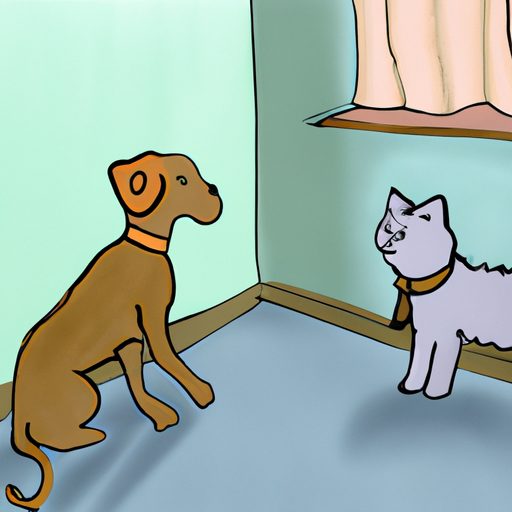As a caregiver, you embody patience and understanding, qualities that are key in introducing two different species to each other. The process of introducing cats and dogs can be a challenging one, but with the right guidance, it can become a less daunting task. Let’s delve into it.
1. Understanding The Basics
Before you introduce your pets, it’s essential to understand their basic behavior. Dogs are pack animals, often eager for social interaction. Cats, on the other hand, are territorial and may need more time to adjust. Understanding these traits will help you in the process.
-
Dog behaviors:
- Playful
- Loud
- Social
-
Cat behaviors:
- Independent
- Reserved
- Quiet
2. Preparing for the Introduction
Preparation is key. Both parties need to feel comfortable and safe. Prepare a neutral space where neither animal has marked its territory.
- A room with a door is ideal for the first meeting.
- Ensure the dog is on a leash and the cat has an escape route.
- Have treats at hand as a reward for positive behavior.
3. The Initial Introduction
The first meeting is crucial. Keep it short and controlled.
- Allow them to sniff each other’s toys or bedding beforehand to get used to the scent.
- During the meeting, observe their body language closely.
- If signs of aggression are shown, separate them immediately.
4. Gradual Integration
After the initial meeting, gradually increase their time together. Remember, patience is key. Don’t rush the process. If aggression is shown, don’t scold. Instead, calmly separate them and try again later.
5. Establishing a Peaceful Co-existence
Once they become comfortable with each other’s presence, allow them to interact under supervision until you’re confident they can co-exist peacefully.
| Stages | Cat’s Behavior | Dog’s Behavior |
|---|---|---|
| Initial Introduction | Reserved | Excited |
| Gradual Integration | Curious | Calm |
| Peaceful Co-existence | Accepting | Playful |
FAQ
Q: How long does the introduction process take?
A: It varies for each pair. It could take from a few days to a few weeks. Be patient and persistent.
Q: What should I do if my pets show aggression?
A: Separate them calmly and try again later. Consult a professional if aggression persists.
Q: Can older pets still adjust to new ones?
A: Yes, with patience and time, older pets can adjust to new companions.
Q: How can I reinforce positive behavior?
A: Reward them with treats and praise when they show positive behavior towards each other.
Remember, every animal is unique and will respond differently. But with your loving care and patience, your cat and dog can become the best of friends.



